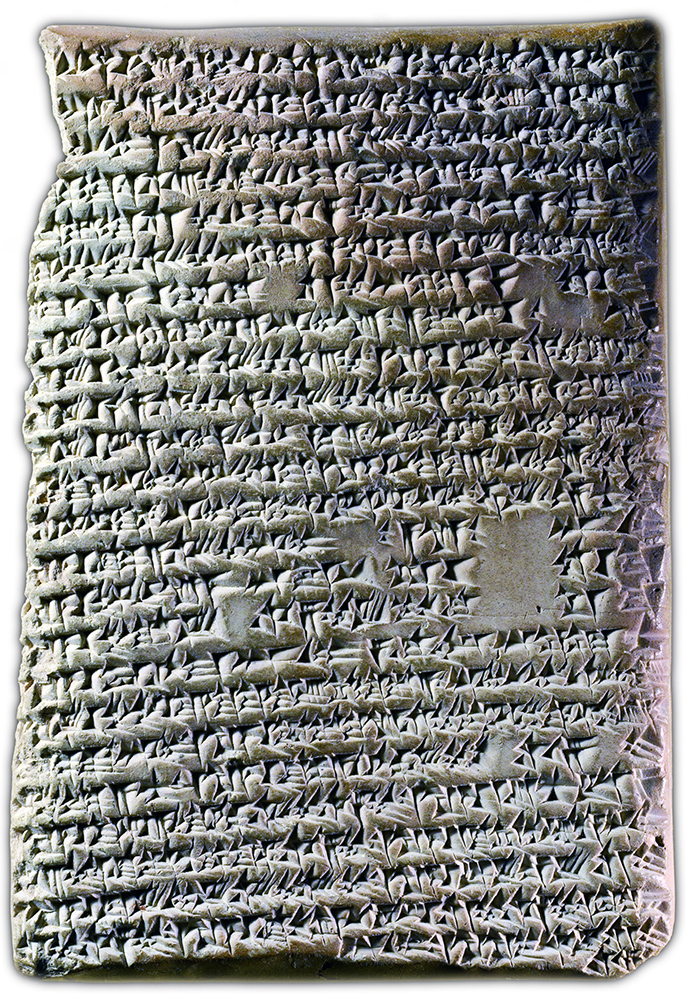Home
| Cuneiform Commentaries Project (original) (raw)
Subscribe to the newsletter
NBC 7843 (CCP 3.1.5.E)
© Yale Babylonian Collection
Mesopotamian commentaries represent the world’s oldest cohesive group of hermeneutic texts. Numbering nearly 900, the earliest date to the eighth century and the latest to ca. 100 BCE. The purpose of this website is to make the corpus available both to the scholarly community and a more general audience by providing background information on the genre, a searchable catalog, as well as photos, drawings, annotated editions, and translations of individual commentary tablets. For the first time the cuneiform commentaries, currently scattered over 21 museums around the globe, will be accessible on one platform.
The Cuneiform Commentaries Project is funded by Yale University (2013-2016) and the National Endowment for the Humanities (Division of Research Programs “Scholarly Editions and Translations,” 2015-2018).
Search the catalogue
Recent additions to the corpus
| CCP 6.7.A - Weidner’s God List A Courtesy of the Trustees of the British Museum Neither rubric nor colophon are preserved on this cola-type commentary from the British Museum’s Sippar Collection. The fragment is rather thick. Read more about CCP 6.7.A - Weidner’s God List A | CCP 3.5.22.A.b - Ālu 22-23 A Courtesy of the Trustees of the British Museum This commentary is preserved in two virtually identical manuscripts from two different cities. The first one, SpTU 5 259 (CCP 3.5.22.A.a), was found during the German excavations at Uruk. Read more about CCP 3.5.22.A.b - Ālu 22-23 A | CCP 3.6.3.A - Izbu 7 A This almost perfectly preserved tablet contains a thirty-four line commentary on the 7th tablet of the teratological series Šumma Izbu. Read more about CCP 3.6.3.A - Izbu 7 A | CCP 6.1.13.B.b - Aa II/5 (pirsu 13) B Courtesy of the Trustees of the British Museum The present text, a small fragment in the British Museum’s “Sippar Collection,” but possibly originating from Babylon, contains short comments on entries from Aa II/3, II/4 and II/5. Read more about CCP 6.1.13.B.b - Aa II/5 (pirsu 13) B |
|---|---|---|---|
| CCP 6.2.5 - Diri 5 (?) Courtesy of the Trustees of the British Museum This small fragment, which probably originates from Babylon, appears to contain entries of the fifth tablet of the supplemental syllabary Diri. Read more about CCP 6.2.5 - Diri 5 (?) | CCP 3.1.5.D - Enūma Anu Enlil 5, 17-23(24) D Courtesy of the Trustees of the British Museum What remains of this multi-columned commentary (one large fragment joined to two smaller ones Read more about CCP 3.1.5.D - Enūma Anu Enlil 5, 17-23(24) D | CCP 4.3.u4 - Sagig 14 (?) Courtesy of the Trustees of the British Museum This small fragment contains meager remains of a commentary on a medical text. Read more about CCP 4.3.u4 - Sagig 14 (?) | CCP 3.5.30 - Ālu 30-32 (“27-30”) Courtesy of the Trustees of the British Museum This almost entirely preserved tablet written in Babylonian script was the first tablet accessioned in the Kuyunjik collection (K.1). It contains a commentary on four chapters of the series of terrestrial omens Šumma Ālu. Read more about CCP 3.5.30 - Ālu 30-32 (“27-30”) |

